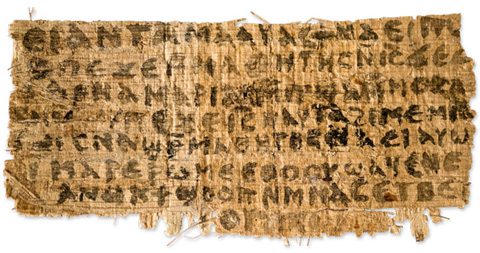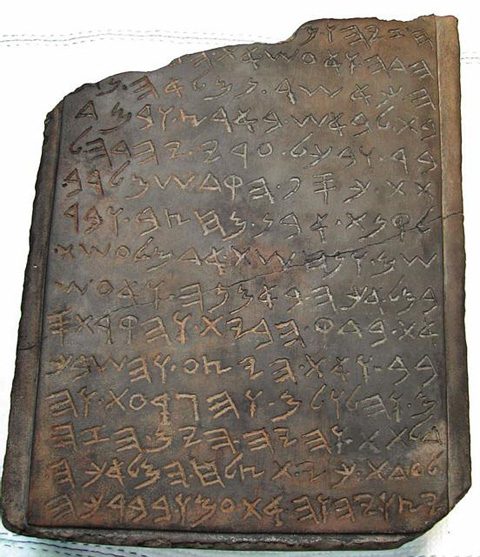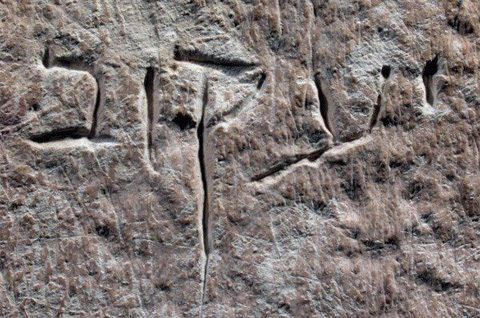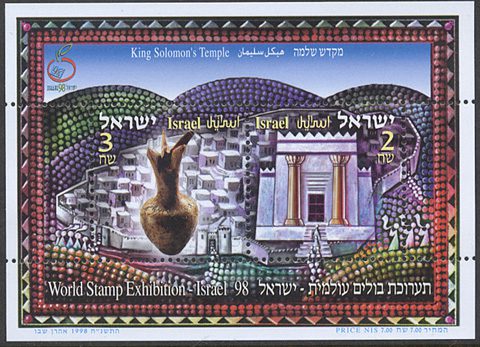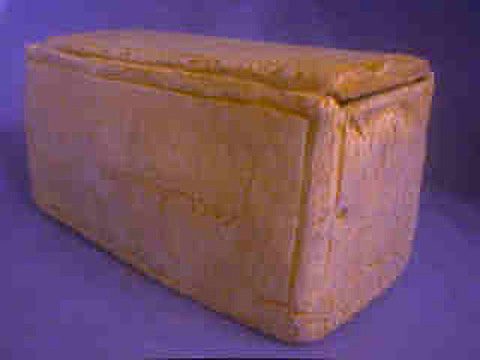Does a tiny scrap of papyrus prove that Jesus Christ had a wife? If so, it would contradict the Gospels and throw the entire New Testament and Christianity itself into doubt.
However, the fragment itself is increasingly in doubt with the Smithsonian Channel postponing indefinitely the airing of an hour-long documentary on the document – and reports that a prominent academic journal scheduled to publish findings on the fragment has decided to hold off.
The papyrus fragment
The first announcements about the discovery came from a professor at Harvard University Divinity School, Professor Karen L. King, a historian of early Christianity, who announced that an anonymous German collector had provided her with the fragment of ancient Coptic text – but could provide no details of when or where it was unearthed or by whom.
On the fragment, Jesus is quoted as using the words “my wife.”
Amid the flash of cameras and hubbub of a dazzled news media, Dr. King picked her words carefully and stopped short of endorsing the authenticity of the fragment. She declared she was making the finding public “despite many unresolved questions” – so that her academic colleagues could weigh in, according to Laurie Goodstein reporting in the New York Times.
“And weigh in, they have,” noted Goodstein. “A few said that the papyrus must be a forgery. Others have questioned Dr. King’s interpretation of its meaning. Some have faulted her for publishing a paper on an item of unknown provenance. And many have criticized her decision to give the scrap of papyrus the attention-getting title ‘The Gospel of Jesus’s Wife,’ as if it had equal weight to other, lengthier texts.”
In Rome, the Vatican called the piece a fake, according to Elisabetto Povoledo, also reporting in the Times.
The Smithsonian Channel was the first to back away from the fragment – postponing the broadcast of a quickly thrown-together
documentary, citing the many doubts of its authenticity, according to USA Today.
Jesus with little children
Next came reports in the Huffington Post that the Harvard Theological Review had postponed publishing King’s 52-page paper on the fragment because of doubts over whether the papyrus is genuine. Helmut Koester, a professor emeritus of Harvard Divinity School and a former 25-year editor of the journal, told the Post’s Jaweed Kaleem that the Journal ”did not want to publish because of doubts from two respected scholars.”
“Koester, who specializes in early Christianity and early Christian archaeology,” noted Kaleem, “added that after seeing an evaluation of King’s work from a colleague in the field, he was ‘absolutely convinced that this is a modern forgery.’”
Craig Evans, a New Testament professor at Acadia Divinity College in Nova Scotia, is one of the scholars who has questions. Evans blogged on Near Emmaus, a biblical history website, that he thought “the papyrus itself is probably quite old, perhaps fourth or fifth century, but the oddly written letters are probably modern and probably reflect recent interest in Jesus and Mary Magdalene,” reported Kaleem.
The Associated Press quoted several of Dr. King’s colleagues as saying that the handwriting, grammar and shape of the fragment makes them suspect it was forged.
Will the papyrus be exposed as a forgery -- like the Jehoash tablet?
Coptic scholar Dr. Alberto Camplani said he is suspicious because it apparently had been bought and sold on the highly questionable
antiquities market – plagued by grave robbers and forgers – and not through a legitimate archeological dig. Several scholars told the Times that Dr. King should not have agreed to study the fragment without verifying that it was not obtained illegally.
“It’s usually the science that precedes the big announcements,” noted Evans. “These things aren’t usually left untested, especially where a papyrologist has not uncovered it in Egypt.”
“The circumstances in which it’s come to light really require all scholars to be really cautious about how we proceed,” said Carl R. Holladay, professor of New Testament studies at the Candler School of Theology at
“Such an object demands that numerous precautions be taken to establish its reliability and exclude the possibility of forgery,” wrote Dr. Camplani, who was also critical of the “news media frenzy precipitated by the ‘quick to shock’ assertion that Jesus may have been married,” noted Povoledo. Dr. Camplani suggested that the sensationalistic headlines could have been avoided.
Dr. King is already held in suspicion by conservative religious scholars for her extensive writing about the “Gospels” of Mary, Judas and Philip, rejected as fakes by most biblical academics.
Where did she get the scrap of papyrus? Two years ago, Dr. King says, she received an e-mail from an antiquities collector who asked her to translate a fragment that contained a reference to Jesus’ wife. Dr. King says the owner does not know the history of the fragment and has asked to remain anonymous.
Disney’s Pocahantas has little in common with the historical Indian princess
Dr. King herself noted that the fragment itself is no proof at all that Jesus was married. If it is authentic, it would have been written by Egyptian Copts at least 350 years after His death. That makes it about as historically reliable as the 1995 Disney cartoon movie in which 350 years after her death, Pocahantas is portrayed as converting Captain John Smith to become an Earth-worshiping pagan – when in fact contemporary accounts and even a classic painting in the Rotunda of the U.S. Capital document that Smith won the Indian princess over to devout Christianity – not the other way around.
If it is authentic, the papyrus fragment is merely a glimpse of a discussion among Egyptian Christians 350 years after Christ’s life about whether their Savior was married or celibate – much like today’s endless debates over whether Christopher Columbus was a righteous man of God as his personal notes seem to indicate or a villain who should be reviled for opening up the Americas to western occupation and exploitation. In such debates centuries after the fact, emotions may be strong – but public opinion remains just that — opinion. Historical fact must be drawn from reliable records, not musings centuries after the fact.
“Despite her cautions, the finding has prompted ‘Jesus Was Married’ headlines around the world — and jokes about Mrs. Jesus’ ‘honey-do’ list,” notes Goodstein in the Times. “The papyrus fragment, which measures only about 1 ½ by 3 inches, is written in Coptic that Dr. King says is consistent with writing seen in fourth-century Egypt. It is roughly rectangular, torn on all four sides, so that each line of text is incomplete. The ink on the front side contains eight lines, dark enough to be legible. Line 4 purportedly says, ‘Jesus said to them, “My wife…”’ Other phrases in the text suggest that it is an account of a dialogue between Jesus and his disciples, Dr. King maintains. According to her translation, Line 3 includes the words “Mary is worthy of it.” Line 5, immediately after the line about Jesus’ wife, says, “…she will be able to be my disciple.” Line 7 says, “As for me, I dwell with her in order to…”
But the papyrus fragment has no verifiable “provenance” whatever. In
both the archeological and art worlds, provenance is vital in proving whether something is authentic.
The Mona Lisa
Provenance is merely the history of a piece. For example, the provenance of the famous Leonardo da Vinci painting “Mona Lisa” is the verifiable record that the artwork in the Louvre Museum is indeed the real thing. In 1550, the painting was described by da Vinci biographer Giorgio Vasari 31 years after his death. Those who had known the master artist were still living – such as Agostino Vespucci and the family of Lisa del Giocondo, who is believed by many to be portrayed in the painting. The painting was inherited by one of da Vinci’s students and sold to King François I of France. It was kept at Fontainebleau Palace until King Louis XIV took it to the Palace of Versailles. After the French Revolution, it was moved to the Louvre, then to Napoleon’s bedroom, then back to the Louvre and was carefully hidden during such conflicts as the Franco-Prussian War (1870–1871) and World War II. It was stolen on August 21, 1911, but recovered two years later. Thus, experts do not dispute that the painting is the real thing.
Dr. King’s shred of papyrus is quite another matter. Jennifer Sheridan Moss, president of the American Society of Papyrologists and an associate professor of classics at Wayne State University in Detroit, said that the society would probably not publish a paper on such a piece of papyrus without knowing its provenance. “But if something this interesting came up, I suspect we would pursue more information on its provenance,” she said.
Dr. King admits that she has no verifiable provenance of any kind for her papyrus fragment. It could have been created yesterday by a clever artifact forger – and there is no shortage of such. They’ve pulled off some dramatic and highly profitable frauds in recent years. In 2002 an ossuary reported to have contained the bones of the Apostle James was revealed amid much press hoopla.
Inscription on the St. James Ossuary
In 2002, the Biblical Archaeological Review announced the finding of the ossuary inscribed in Aramaic with the name Ya’akov bar Yehosef akhui di Yeshua – that is: “James, son of Joseph, brother of Jesus.” It had been bought for $500 at a 1986 antiquities auction in Israel by Oded Golan, who said he believed it had been found in an ancient tomb in the Silwan suburb of southeastern Jerusalem.
Both the Hebrew Union College and Ben-Gurion University told the Review the ossuary had no provenance nor historical significance since all three names in the inscription, Ya’akov (James), Yehosef (Joseph) and Yeshua (Jesus) were extremely common during the first century – much like John, Jim or Joe today.
The Israel Antiquities Authority confiscated the ossuary and appointed a team of 15 epigraphers and physical scientists to analyze it. In June 2003 the authority declared the ossuary itself to be genuine, but the inscription was a partial forgery – that a clever antiquities forger had added key words to make it of interest to biblical scholars. Israeli authorities raided Golan’s apartment, finding a workshop filled with inscription tools. Golan was arrested as was museum conservator Refael Brown and antiques dealers Robert Deutsch, Shlomo Cohen and Faiz El Amlah, indicted on charges of having added to the ossuary the inscribed name of “James” and the phrase “brother of Jesus.”
Officials said that over several decades, a ring of forgers had created and traded a series of biblically-related fakes, some of which had been
bought for very high prices and placed in the prestigious Israel Museum in Jerusalem where Brown worked.
Israeli stamp with the now-discredited Temple Pomegranate
They were charged not only with faking the James Ossuary inscription, but also some of Israel’s hitherto prized museum pieces, including the ivory Temple Pomegranate, the inscribed Jehoash Tablet, the Widow’s Plea Ostracon, various clay shards written on with iron-carbon ink, an inscribed wine jug, 190 seals, a stone oil lamp, a quartz bowl and the royal Manasseh Seal.
Each, it was said, had been very cleverly forged, with “fake patina manufactured with great expertise.” The Israel state authorities and private museums had spent millions of dollars for the pieces and were quite embarrassed by the discovery of the forgery ring.
In court, Golan admitted that the ossuary had come from a cache of other such pieces found in 1980 at a tomb in East Talpiyot. Soil had been applied to the box in order to support Golan’s original claim that it had been found elsewhere. However, the case of the ossuary continues to swirl with controversy – particularly after Golan was acquitted of having forged the inscription.
Today, not much agreement remains between archaeologists and those who insist the ossuary’s inscription is authentic, such as French ancient-writing expert Andre Lemaire. However, the case cast a spotlight on the shadowy-but-legal sales of antiquities in Israel. As a result, the market in illicit antiquities from unauthorized excavations “has almost been entirely halted ,” said an official for the Israeli Antiquities Authority. “This in turn has led to a dramatic reduction in the scope of antiquities robbery occurring at biblical sites.”
How Golan and others acquired the box, and what they did with it next remains mired in controversy. Scholar Rochelle Altman says the inscription is phony and “bears the hallmarks of a fraudulent later addition” in a bid to dupe some wealthy collector into paying more.
The controversial St. James Ossuary
“For archaeologists, the court decision doesn’t really change anything,” says University of North Carolina archaeologist Jodi Magness, author of Stone and Dung, Oil and Spit: Jewish Daily Life in the Time of Jesus. “There is no way to tell where the ossuary came from, and without that context, the ossuary is worthless.”
So, is Dr. King’s papyrus fragment a forgery? That remains to be seen. She has agreed to have it scientifically dated by impartial experts.
However, other issues remain: “Aside from questions about the fragment’s authenticity and provenance, some scholars have questioned Dr. King’s interpretation,” writes Goodstein in the Times, “since the fragment lacks context.”
Echoing others, Darrell L. Bock, senior research professor of New Testament studies at Dallas Theological Seminary, noted that even if the fragment is somehow found to be authentic, it might well show Egyptian Christians 350 years after Jesus walked the roads of Israel telling a metaphorical story about Him.
After all, in his epistles to the early church, the Apostle Paul refers to Christ's wife repeatedly -- but it is Christians and the church who are called “the bride of Christ.”
